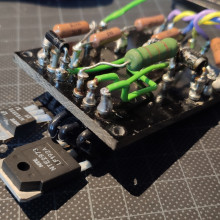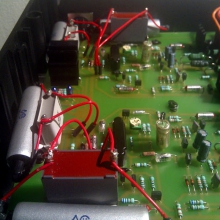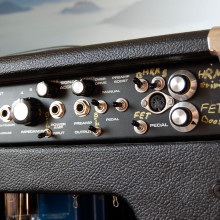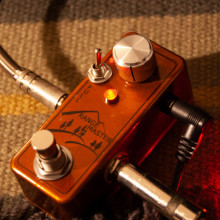Here you’ll find a collection of things that I do, make, say and think. A collection of projects I publshare on other sites online. Including; custom built and designed guitar or Hi-Fi amplifiers and effects, custom PC servers, and rescued, upcycled hardware. Simply a central place to collect what I’m doing with some of my a creative rest at any given time.
If you are in search for my professional information go to >JohannesJohansson.com<
For multiple ways to contact me this >linktree< makes it easy.
Categories
- DIY (19)
- DIY Audio (10)
- DIY Computation (6)
- DIY Misc (4)
Random Posts
-

Family & apartment friendly server cabinet
Finding ways to live with an interest in computers can be a challenge. That is having half a dozen computers running 24/7 is not something […]
-

Restomod Car: Brakes and Suspension 1
Completely changing the suspension and brakes with oversized parts on this little car can make for a very fun ride and good companion to a […]
-

Guitar rebuild: 1. onboard preamps & hardware
From 70’s hard rock, to a credible metal guitar this one started its life 1982 in Japan, built in the great Matsumoku shop. Known for […]
-

Headphone repair
When headphones wear out it’s not unusual to effect the soft fabric parts only, so can eb saved by replacement, or you can prevent failure […]
-

Turning laptops into mini-servers
One of the most common e-waste sources out there is laptops, slower than other computers and often not upgradable, lacking ability to change peripherals, like […]





RangeMaster – Pedal Progression 1
In this series I revisit and re-build some of my favorite guitar pedals. Here a treble booster is given some of the best vintage parts possible, protection circuitry, power supply filtering, a negative voltage supply, some indication circuitry, and a, very, shiny housing.
Next I’d like some indication for the ‘full’ switch that increase the frequency range of the Rangemaster boost. Here there are several solutions such as the ‘millennium switch‘ or an idea by Joe Davisson, having several 2n3904s left over from getting the perfect pairs in a phaser I used the suggestion of Jack Orman, also having a very nice low parts count. Worked great, and using a tiny square round top that discreetly pops up.
Finished everything is very snuggly fitted but, do fit..
For resistors I customary use Dale RN military(for power), and PRP(for signal) resistors, not that it matters here, really. One of the resistors are switched out for a tiny Vishay multi-turn potentiometer, this is so the transistor bias can be set more acurately, also meaning it can be tuned by both ear and by reading voltages, very useful indeed..
Very happy with this, came out nice and made up from a selection of left-over and really precious parts. Sound-wise there are plenty of things to listen to, try youtube, but what I really enjoy with this is that it lend itself to great blusey rock to classic rock, while also together with a strong buffer manages to push a high-gain amp into nice saturation needed in Metal, as it does bring forward the mid and upper-mid frequencies, shelving of bass that otherwise muddies a Metal sound of many many high gain amps.